Social Wall
Your photographic contributions
You are very likely to publish images of Colmar and its surroundings on social networks... Thank you all for these wonderful pictures !#VisitColmar #ColmarandYou
Your photographic contributions
You are very likely to publish images of Colmar and its surroundings on social networks... Thank you all for these wonderful pictures !#VisitColmar #ColmarandYou
Many travel bloggers and influencers choose to visit Colmar and share their experience with their readers.
A selection of the best articles is available below
If you have a blog and you have planned a visit to Colmar, you can contact our press officer:

Author : carpediemeire.com
Colmar is a complete fairytale and it’s said it provided inspiration for Beauty and the Beast. Who would doubt that. Walking those streets would have been more than enough to satisfy me for the days I was there, but I discovered a city I didn’t expect. Beneath the pretty exterior lies a town of much history and culture, with an impressive culinary scene and viticulture. I fully expect you to end up in Le Petite Venise, but when looking for things to do in Colmar, I implore you to look a little deeper.

Author : Laurène - My Weekend in Alsace
A visit to Colmar is a must-stop while spending a weekend in Alsace. Its reputation as a pretty town is firmly established, and frankly, it is completely well-deserved! It’s a true picture-postcard town, where it’s extremely pleasant to wander around. I don’t believe that I know one single person who didn’t fall under the spell of Colmar! As for me, I can’t get enough of it, even if I have lived there and that I have explored it countless times with friends visiting it for the first time.

Author : Ashley Lokey from the Life with the Lokeys blog
When I first read about the fairytale village of Colmar, I knew I had to visit. As soon as the borders opened back up, we headed straight to Colmar. Located in the Alsace region along the border between France and Germany, Colmar is known for its colorful houses and the cutest Christmas market. Wandering the streets of Colmar is like stepping into a fairytale. It is said that it was the inspiration for Beauty and the Beast, and there is even a fountain that looks like the one in the movie. We only spent a day in Colmar, but we plan to spend more time at Christmas when the market is open. Colmar can become very touristy so I recommend getting there as early as possible or staying the night so you can enjoy the village without the crowds. We were lucky and it was not crowded the day we went.
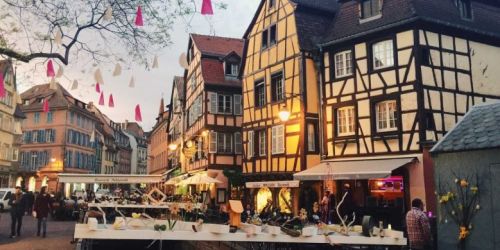
Author : Victoria - bridgesandballoons.com
I was drawn to Colmar after hearing stories and seeing photos from other bloggers that painted a portrait of a picture-perfect town that couldn’t fail to charm (thanks Erin and Simon for the tip!). It’s in the Alsace region of France, right next to Germany, and you can see the German influence everywhere, from the architecture to the pretzel-filled menus. It would be easy to think you’re in Bavaria, save for the stylish window shutters and macaroon-filled bakeries that add a distinctive French touch.
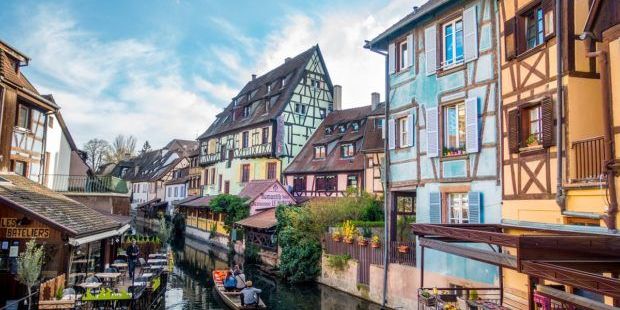
Author : Laura Longwell - Travel Addicts
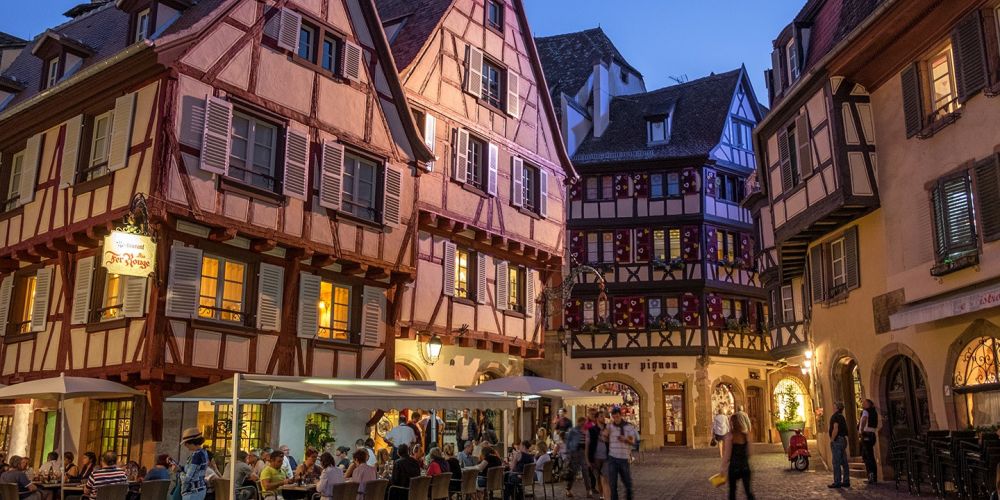
Author : Lucy from the On the Luce Blog
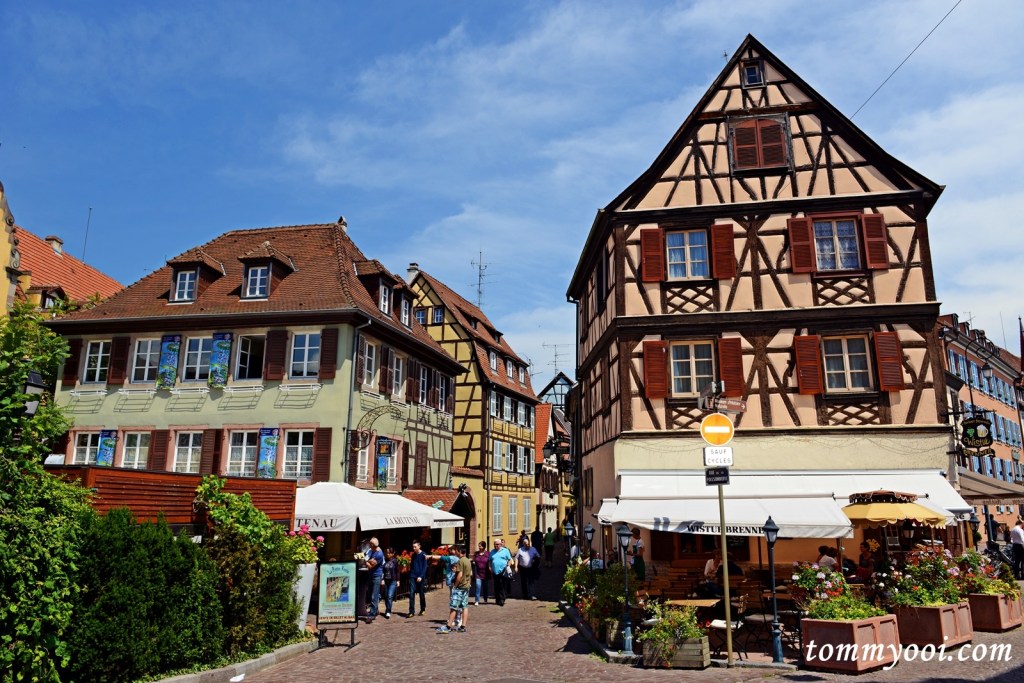
Author : Tommy Ooi
Everyone knows Paris & London, yet there are many small villages in France & Europe offers a unique & unspoilt glimpse of ancient Europe, untouched by modern development tracing back to Medieval Period.
Hence it ignites our interest to visit them. One of the must visit village is definitely Colmar, France. 3 Days 2 Nights should be sufficient.
Colmar can be easily reach by TGV train from Paris (3 hours) & only 30 mins from Strasbourg.
All of Colmar’s attractions are concentrated in its old town. Therefore the best way to get around Colmar is on foot.
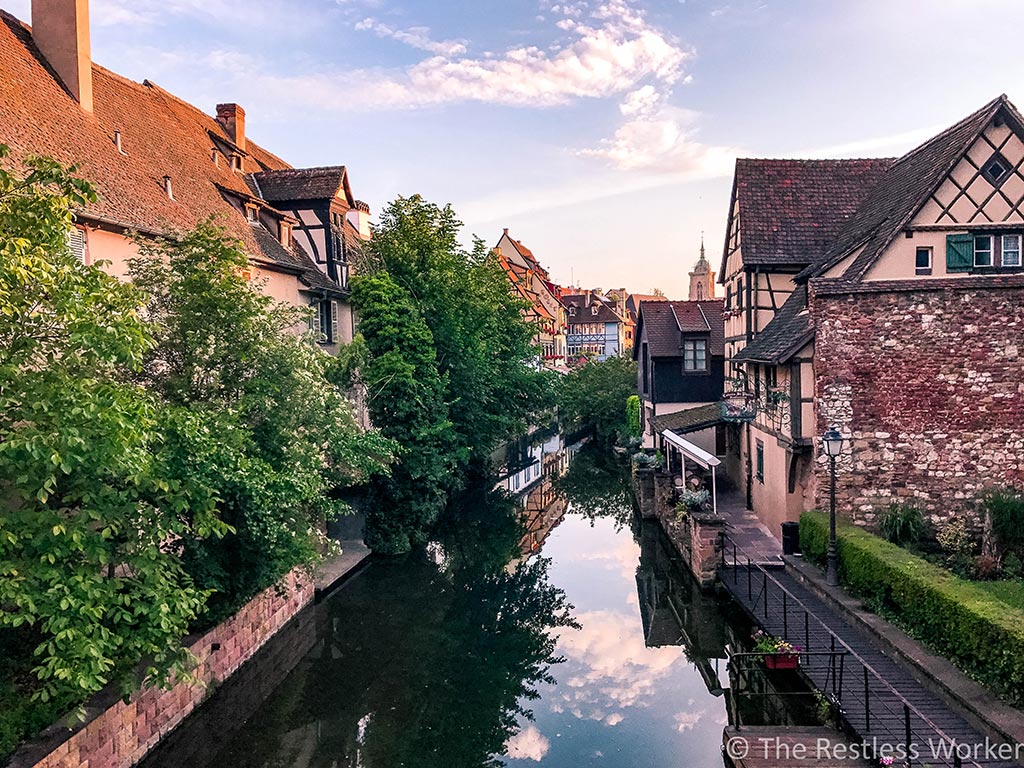
Author : Madisyn McKee from the Restless Worker blog
I don’t think there could ever be enough photos of Colmar shared. This little town is by far one of the cutest I’ve ever been to. In fact, I haven’t stopped talking about this fairytale town since visiting.
While Colmar is often compared to its sister city, Strasbourg, I found I enjoyed Colmar so much more. Not only was Colmar smaller, the crowds were thinner and it felt more relaxed overall.
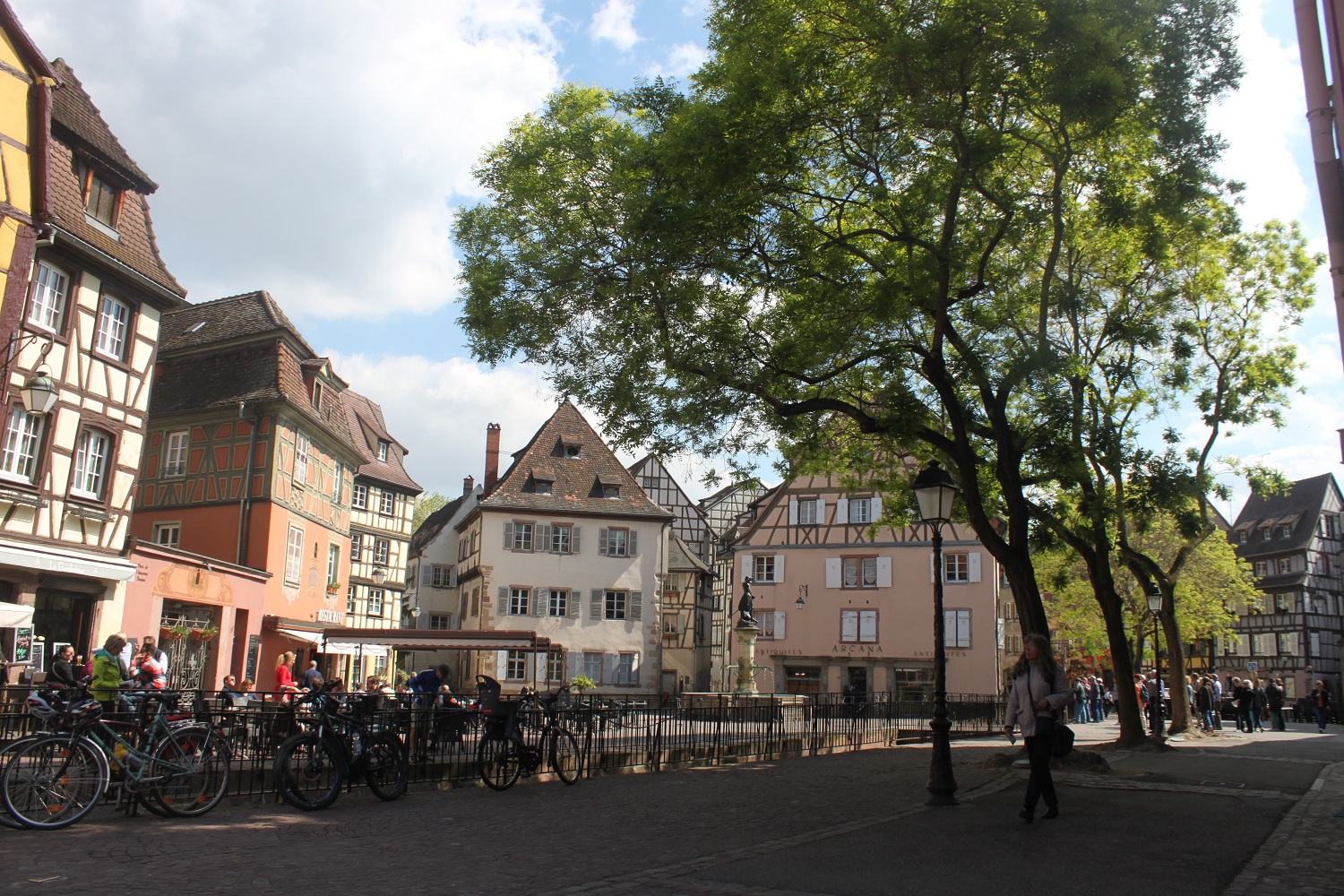
Author : Lilly from the I Travel for the Stars blog
Colmar is one of the well-known gems of Alsace, the region of France that borders Germany. It’s rumoured to have inspired the setting for Beauty and the Beast but whether or not it was Colmar or another Alsacian village, Colmar is definitely a town out of a farytale.
The famous picture of Colmar’s “little Venice” is probably the most common one you’ve seen and annoyingly, it might also be the only one you’ve ever seen – but don’t be fooled! This town is absolutely huge for the amount of old timber-framed houses it has, all of which are super colourful and date circa the 17th and 18th centuries. There’s a lot more to see than la Petite Venise, even though taking a boat tour of this area can be quite fun.

Author : Ang and Ryan from jetsliketaxis.com
Let’s go to France! We recently had the opportunity to visit the Alsatian city of Colmar, in southeastern France, while we were visiting friends in the Black Forest region of Germany.
It’s an easy drive if you’re near Freiburg, or the Swiss city of Basel, and makes for a good day trip of walking, relaxing, and shopping. Our German friends like to come here to shop now and then, so they did that while we wondered in awe of buildings, homes, and churches that date as far back as the 13th century.
Sculptor Frédéric Auguste Bartholdi – the creator of the original Statue of Liberty – was from Colmar, so he has a museum here and one can find little tributes and symbols to his work around town.
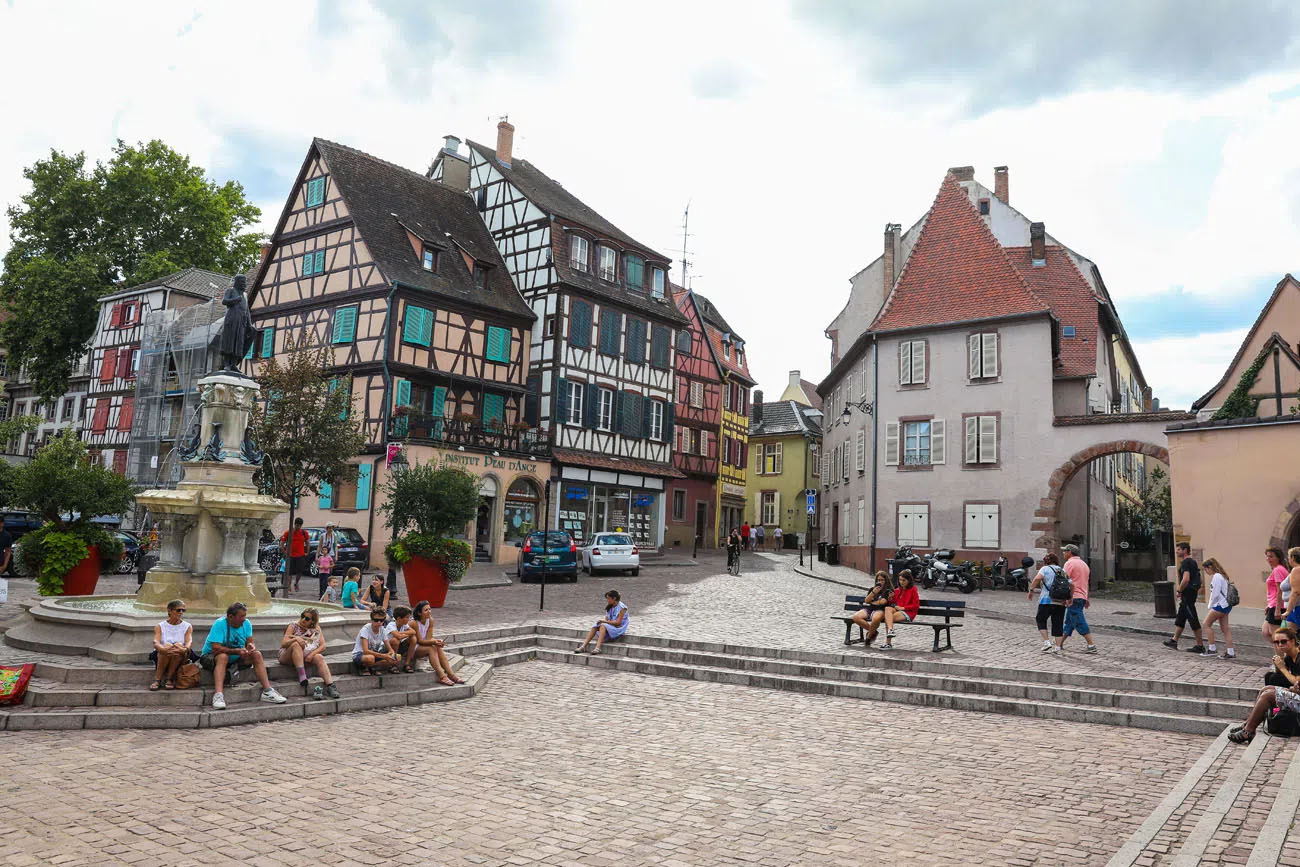
Author : Julie from earthtrekkers.com
Colmar is a picture-perfect town located in the Alsace region of France. This small town, with its colorful, half-timbered houses, overflowing flower pots, and bustling street cafes, looks like it has been plucked right out of a fairy tale. With one day in Colmar, you have just enough time to explore the scenic streets, dine on Alsatian food, go wine tasting, and even explore a museum or two.

Author : Jessica Wang - notjessfashion.com
Colmar is situated in the Alsace region of northeastern France, which borders Germany. Here you can expect cold winters with mostly cloudy days, which warrants cozy jackets and lots of chunky knits. I opted for pieces that can be mixed and matched – and the usual cold weather accessories such as gloves, scarves, and hats.
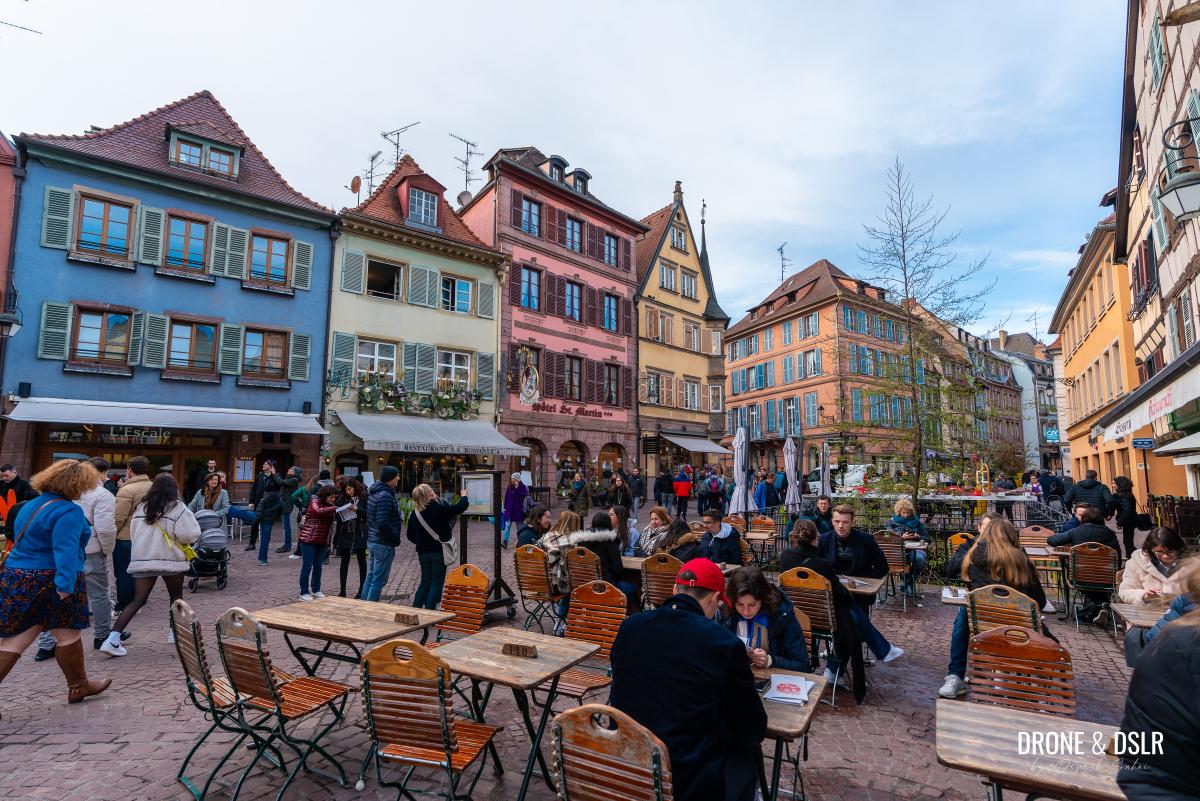
Author : Drone & DSLR
Colmar, situated in the northeastern part of France’s Alsace region, is a charming little town that captivates visitors with its picturesque beauty and rich history. With its well-preserved medieval old town and stunning blend of German and French architectural styles, Colmar is a must-visit destination for those wanting to explore a picture-perfect Atlassian town.
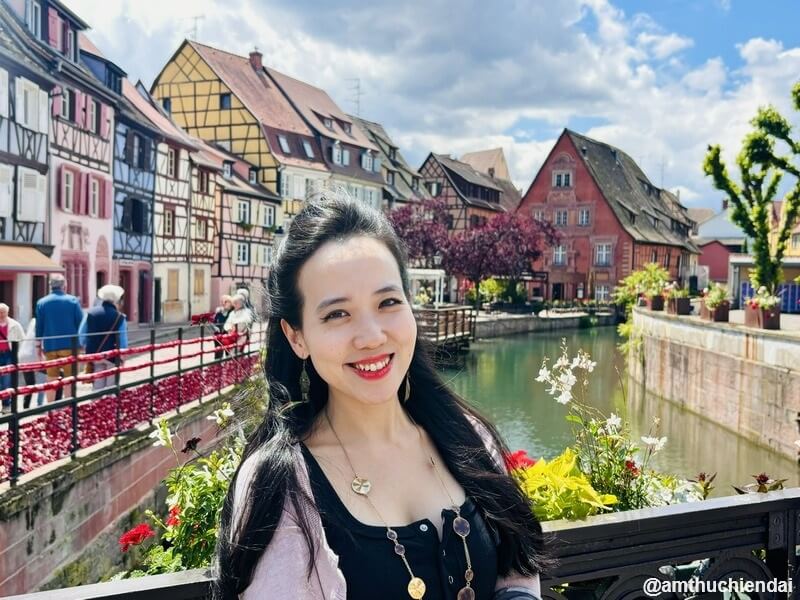
By Quynh Huong
Nếu bạn đã từng nghe nói tới Alsace – một trong những vùng du lịch nổi tiếng nhất của Pháp nằm ở phía đông bắc giáp Đức và Thụy Sỹ – tôi tin chắc hẳn bạn đã biết đến Colmar.

Nestled among vineyards, its traditional houses, canals, floral displays, amazing cuisine, famous wines and charming accommodation make Colmar an outstanding microcosm of Alsace – showcasing its lifestyle, conviviality and hospitality – the key features of its unique, exceptional welcome.
The capital of the Alsacian wines, situated near Germany and Switzerland between the Vosges and the Rhine, Strasbourg and Mulhouse, offers visitors an exciting glimpse of 1000 years of European history.
Besides, with its 67,000 inhabitants, Colmar retains a 'country town' atmosphere which contributes so much to its charm. Wonderfully preserved from the ravages of time, its homogenous historical centre is classed as a 'protected area' and has benefited from careful restoration and ongoing improvements for more than 20 years.
Every season, it offers a richly diverse range of cultural, sporting, nature, relaxation, and culinary enjoyments.
Colmar will also delight you with the quality of its shops and boutiques that will allow you bring a small part of Alsace back with you in your luggage! In every street of the historic centre you will find shops upon shops offering "made in Alsace" products: food, table accents, textiles, déco, accessories, soft furnishings...

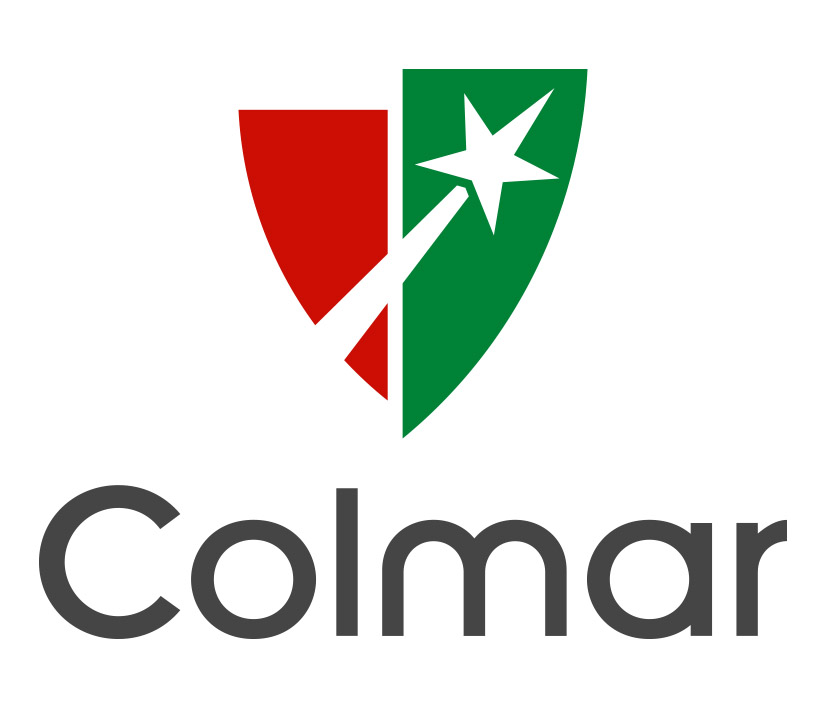
Prefecture of the Upper Rhine (68)

Famous for its half-timbered houses, Colmar's remarkable merchants' homes also do not fail to impress.
Famous among them is the Adolf house, the oldest in Colmar, and the Pfister house dating from the 16th century with its ornate angelled oriel, richly painted murals and long wooden gallery. And don't miss the majestic House of Heads built in the 17th century in German Renaissance style, decorated with 111 masks and a magnificent 3-storey oriel. All of them contributing to the uniqueness of Colmar.
Stroll through Colmar's vast pedestrianized zone, a listed "protected sector", enjoy its rich perfectly preserved religious and secular heritage, taking you from the Middle Ages to the 18th century: from "Little Venice" which has become the "must" venue for photographers the world over, to the Tanners district recognisable by its grand white-fronted houses. Don't miss its majestic "Collégiale" St Martin's Church with its astonishing Gothic architectural details and colours.
Discover the heritage in more detail

1100 computer-driven light sources, using the fibre optics cable network, are skilfully distributed throughout the town and thus allow an original light show throughout the year, which varies in intensity and colour.
Like a magic paintbrush, it redraws the town, applying fresh contours and new reliefs, enhancing a thousand and one architectural details.
The town is illuminated from nightfall on Fridays and Saturdays throughout the whole year, and every evening during major events marking the life in Colmar : the International Festival, Regional Alsace Wine Fair and Christmas in Colmar.

As the gateway to Switzerland and Germany, Colmar Wine Country is the Capital of Alsace Wines and a unique tourist destination in the heart of the Alsace wine growing region.With vastly contrasting terrain, from plains to slopes and mountains, it boasts 37 wine-growing communities and 30 Grands Crus.
Colmar ,will charm you with its local delicacies like sauerkraut, flammenkuchen/tartes flambées, munster, kugelhopf, and other gourmet specialties in traditional restaurants called Winstubs.
Don't miss the chance to delight your taste buds in one of our Michelin-starred restaurants and stop into one of our independent vintners in the town centre or one of the region's many wine growers who will open their doors to share their passion for vines and wine.

Colmar will also delight you with the quality of its shops and boutiques that will allow you bring a small part of Alsace back with you in your luggage!
In the outdoor market, a score of local merchants offer local delicacies, while in every street of the historic centre you will find shops upon shops offering "made in Alsace" products: table accents, textiles, déco, accessories, soft furnishings...
Bargain hunters won't miss out on Friday specials and the many antique shops in the town.



Colmar will move to the beat of Alsatian folk music groups.
These typical Alsatian Folk Evenings are always appreciated by the public (initiated or not). They take place in the heart of the Old Town, at the Old Customs House square, and perpetuate a hundred-year-old tradition, dating back to the 18th century.
The folk evenings ensure a warm, festive and convivial atmosphere. Not to be missed !



The women’s costume consisted of a large, long-sleeved cotton blouse, a long, ample skirt covering the calves down to the ankles, a corselet attached to the skirt and a long, plain apron worn over the skirt, tightened round the waist and fastened with a big bow in the back. The shawl, often matching the apron and initially worn on the head is, at present, worn round the neck and over the shoulders. The stockings, made of wool, were crocheted or knitted. The women wore hardy, heavy dark chestnut clogs during the week, and light-couloured or painted, lightweight limewood clogs on Sundays and festive occasions.
It evolved from the long linen blouse worn by peasants in the 17th century to one with a stiff collar to a soft, turned-down collar. The sleeves were long and pleated, usually tied with ribbons in the 18th century.
Knitted or made of linen, it covered the open collar of the blouse. It had a lace-knitted border which matched the sleeve ends. The collarette has a square or rounded shape.
Usually worn over the blouse, it is wide with many folds. Peasants wore it at mid-calf length while city dwellers wore it to the ankle. Originally two-toned (top to bottom), it was solid-coloured (green, red, purple or brown) after 1830. It was made of silk, cotton or flannel. The Protestant skirt was usually decorated with one or more flowered velvet ribbons at the bottom while the Catholics had no decoration.
Made of fine material, it was attached to the skirt. Worn snug over the blouse, it was laced up in front, hooked at the base or knotted with a silk ribbon.
Tucked into the corselet's neckline. Originally, a simple piece of red cloth to keep warm and cover the blouse´s opening, it became one of the most sumptuous elements of the costume. It is richly decorated with ribbons, flowers, colourful glass, sequins or stamped metal bits at the top where it is visible above the corselet. Seamstresses achieved true works of art decorating them with flower motifs, trees of life, solar wheels, stars, fruit cornucopia, curved motifs, rosettes, etc.
An intergral element of every Alsatian costume, it was worn over the skirt. Originally, it was made of simple white linen, but after 1870, it was made of flowery, silk, satin or taffeta. It is pleated and tightened at the waist by two ribbons that cross in the back and tie into a big knot in front. The bottom of the apron can be decorated with ribbons and lace.
White and hand-knitted, with varying patterns.
Flat-heeled, decorated with either a ribbon or a buckle.
It is decorative and keeps you warm. Usually worn knotted or overlapping. It is made of silk with a long fringe, and is flowered, checked, sparkling or embroidered.
They are typical of the Alsatian costume, and are either knotted bonnets or "beard" bonnets. Embroidered with silver and gold, with sequins and motifs, made of damask or printed cotton, decorated with small glass pieces or stones from the Rhine. Often lined with lace. Around 1830, this headdress had a frontal knot, which kept getting larger, reaching 1 metre in diameter in the 1890s. The colour of the ribbon depended on religious beliefs: black for young Protestant or married women, red and multicoloured for young Catholics.

The men’s costume consisted of a white- and blue-striped or -checked, long-sleeved cotton shirt during the week, and a plain or many-coloured, gold-buttoned waistcoat on Sundays and festive occasions with dark or light brown, or black, corduroy trousers. The triangular-shaped red or checked scarf was worn round the neck. The wide-brimmed black felt hat was decorated with a black silk, knotted ribbon. The leggings were either crocheted or knitted, made of thick wool and the clogs were made of chestnut or lime wood, like the women’s.
It evolved from the long linen shirt that farmers used to wear. The sleeves were long and pleated.
Long trousers dethroned breeches and leggings during the Revolution. Long and narrow, made of black, blue, green or brown wool or bombazine. In some regions, they buttoned all the way down the legs.
Originally a simple piece of red wool attached to the front of the shirt to keep warm, it gradually became a reversible waistcoat with many buttons. Traditionally, the waistcoat was red, but in some regions, it was black, purple or blue velvet.
As early as the 17th century, peasants wore the long frock coat to keep warm. Made of black, brown or blue bombazine or wool, or heavy white cotton. It was slit up to the waist in the back and was worn with breeches and leggings. Around 1830, a short, black bombazine frock came into style. It was decorated with a double row of metal buttons on the front and at the wrists.
An essential element of the male costume, there have been imany variations. From the 17th century, the large-brimmed black felt hat was standard, replacing the tri-corn. Various methods of attaching the rounded, wide brim were used, and knitted caps of varying lengths or fur caps made of skunk or sable each saw its day. The moderate-brimmed, flat-topped black felt hat became standard at the end of the 19th century.
Colmar: The magic of lights
All year round, an original lighting concept
1100 computer-driven light sources, using the fibre optics cable network, are skilfully distributed throughout the town and thus allow an original light show throughout the year, which varies in intensity and colour. Like a magic paintbrush, it redraws the town, applying fresh contours and new reliefs, enhancing a thousand and one architectural details. The town is illuminated from nightfall on Fridays and Saturdays throughout the whole year, and every evening during major events marking the life in Colmar : the International Festival, Regional Alsace Wine Fair and Christmas in Colmar.
Designed by architects of light
This project to use light to enhance the town´s heritage was realised by the Town of Colmar, the Tourist Office and Vialis and also architects of light and based on two types of lighting system which are operational throughout the year; one is static and the other dynamic. The static lighting system picks out landmarks (houses, gables, roofs) pointing the way to your progression through the town and linking the various "Districts" one to the other. The dynamic lighting system cross fading on the "beacon" sites which attract your attention and creating the ambiance which corresponds to the chosen period (change of colour or intensity leading to a definite change of setting as the hours go by).
Four themes were used to create the directing schedule behind these illuminations : water, air, earth and fire.
Blue, which corresponds to the air and to the sky, brushes the rooftops; sea green, very evident on the river banks, accentuates the reflections of buildings and trees in the water; white symbolises the fire of faith when it alights on church towers. As for the colour golden amber, it represents the earth of Alsace, a land of transition and exchange.
Your pictures of Colmar by night on the social networks
#VisitColmar #Colmarandyou